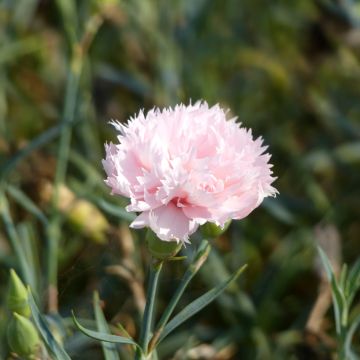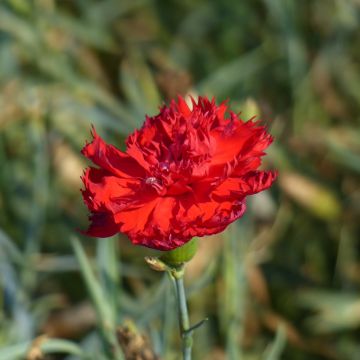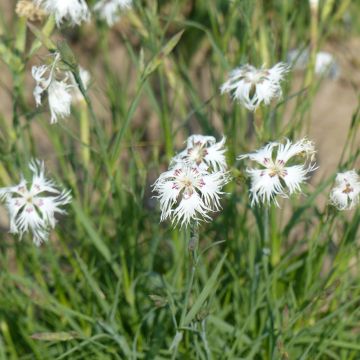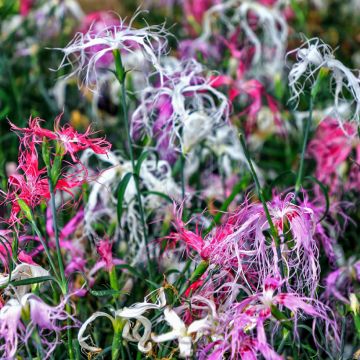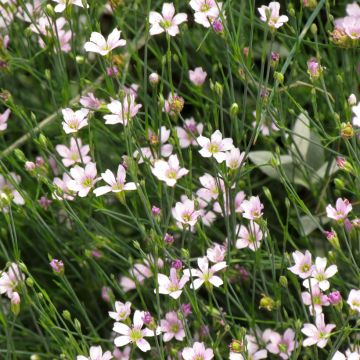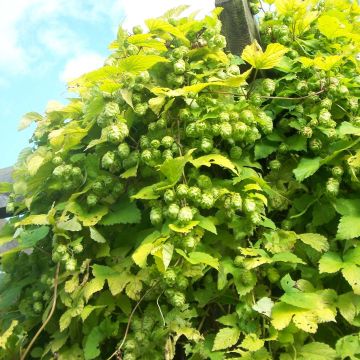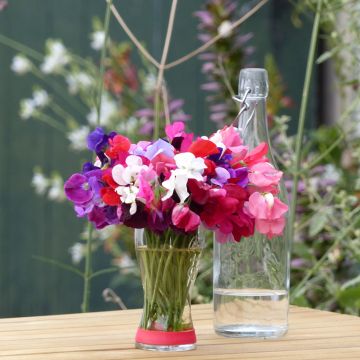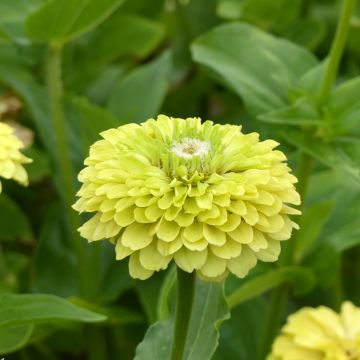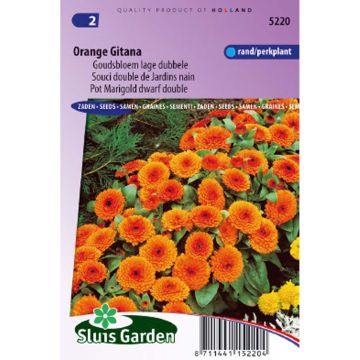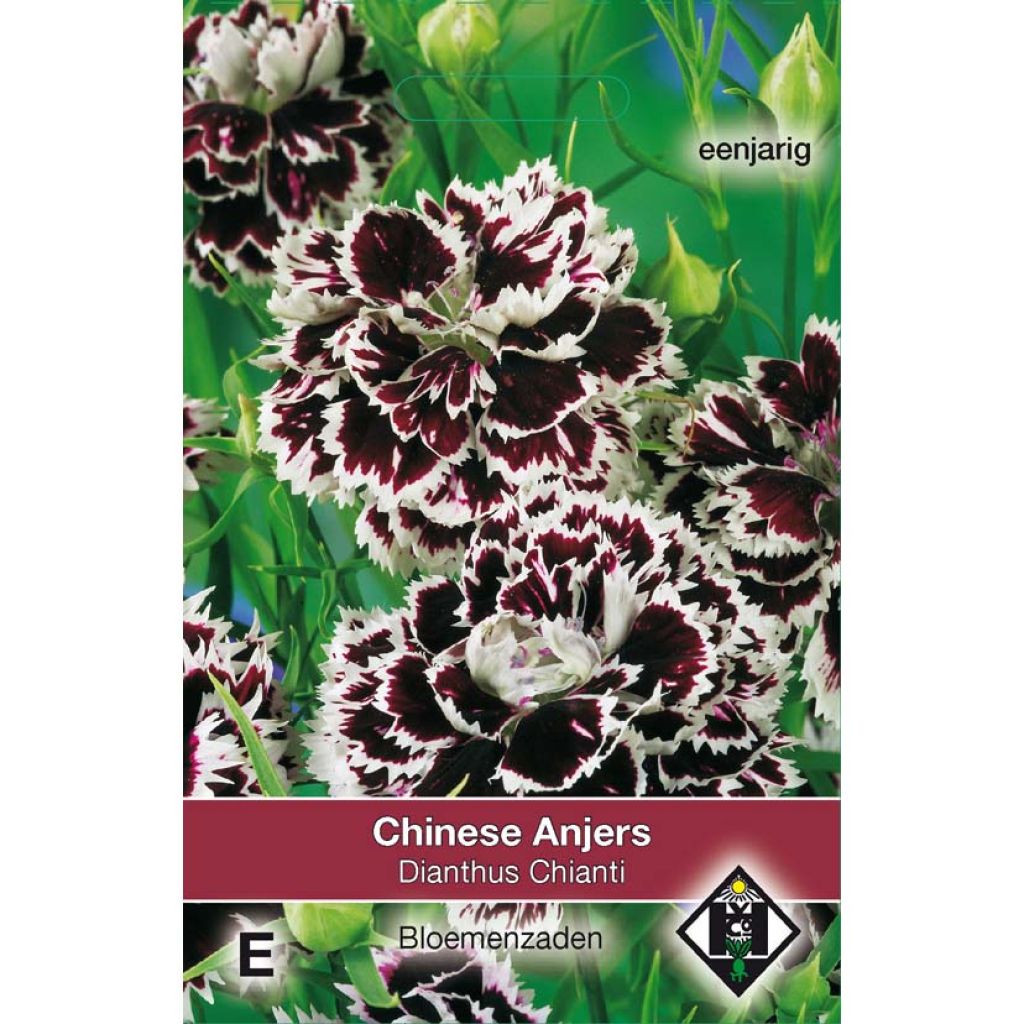

China Pink Chianti Seeds - Dianthus chinensis
China Pink Chianti Seeds - Dianthus chinensis
Dianthus chinensis Chianti
Pink
I won't do it again with seeds. Not very good at getting them to grow. I don't even know if it will yield anything.
Corinne, 09/04/2021
Special offer!
Receive a €20 voucher for any order over €90 (excluding delivery costs, credit notes, and plastic-free options)!
1- Add your favorite plants to your cart.
2- Once you have reached €90, confirm your order (you can even choose the delivery date!).
3- As soon as your order is shipped, you will receive an email containing your voucher code, valid for 3 months (90 days).
Your voucher is unique and can only be used once, for any order with a minimum value of €20, excluding delivery costs.
Can be combined with other current offers, non-divisible and non-refundable.
Home or relay delivery (depending on size and destination)
Schedule delivery date,
and select date in basket
This plant carries a 6 months recovery warranty
More information
We guarantee the quality of our plants for a full growing cycle, and will replace at our expense any plant that fails to recover under normal climatic and planting conditions.
Would this plant suit my garden?
Set up your Plantfit profile →
Description
China Pink 'Chianti' is a highly unusual variety that features bicoloured double blooms. Each petal is deep, velvety purple to almost black, contrasting with bright white fringed edges. China pinks are tender perennials, often treated as annuals in colder climates. When sown indoors in early spring, they offer a long-lasting display all summer long. Ideal for sunny borders or containers!
Dianthus 'Chianti' belongs to the Caryophyllaceae family. It is selected from Dianthus chinensis (China Pink), a species primarily native to China where it occurs naturally in meadows and steppes, sandy dunes, forest margins and riverbanks. This fast-growing, short-lived perennial reaches a mature height of about 20 cm (in full bloom) for a spread of 30 cm or more. It forms a small, spreading mound of linear, bright green to bluish green leaves, tightly gathered on slender stems. Flowering starts in June and lasts until September-October if the soil is not too dry. It features 3 cm wide, deeply fringed blooms with contrasting purplish black and white petals. They have a delicate, sweet and spicy scent.
Dianthus 'Chianti' is perfect for stony slopes or rock gardens where they happily spread out in the sunlight. They look very pretty over dry-stone walls and are useful for underplanting shrubs, in large pots, containers or troughs. Amend heavy or clay-based soils with gravel and coarse sand to improve drainage. China pinks go very well with alpine plants such as alyssums, saponaria, Phlox subulata or Phlox douglasii, rock cress, candytuft and helianthemums.
Flowering
Foliage
Plant habit
Botanical data
Dianthus
chinensis
Chianti
Caryophyllaceae
Pink
Cultivar or hybrid
Other Dianthus seeds
View all →Planting and care
Sow from February to April on the surface of light, moist sowing mix and cover with a fine layer of compost or vermiculite. Keep in a light room at a temperature of 18-20°C until germination (14-30 days). Make sure the soil stays moist but not waterlogged. When the seedlings are strong enough to handle, transplant them into pots and move them to a cooler place. When all risk of frost is over, plant them out, leaving about 30 cm between each plant.
Dianthus chinensis enjoys ordinary, loose, humus-rich, stony or limestone soils that are cool to dry with excellent drainage. It prefers full sun. Water only during prolonged periods of drought. Removing spent flowers regularly encourages fresh blooms whilst extending the plants’ life expectancy. In stony soils, China Pinks self-seed abundantly. Cut back the plants after flowering to promote new growth. In poor soil, feed with a balanced fertiliser in March. Dianthus chinensis dislikes competition and shade from neighbouring plants.
Sowing period
Intended location
Planting & care advice
-
, onOrder confirmed
Reply from on Promesse de fleurs
Similar products
Haven't found what you were looking for?
Hardiness is the lowest winter temperature a plant can endure without suffering serious damage or even dying. However, hardiness is affected by location (a sheltered area, such as a patio), protection (winter cover) and soil type (hardiness is improved by well-drained soil).

Photo Sharing Terms & Conditions
In order to encourage gardeners to interact and share their experiences, Promesse de fleurs offers various media enabling content to be uploaded onto its Site - in particular via the ‘Photo sharing’ module.
The User agrees to refrain from:
- Posting any content that is illegal, prejudicial, insulting, racist, inciteful to hatred, revisionist, contrary to public decency, that infringes on privacy or on the privacy rights of third parties, in particular the publicity rights of persons and goods, intellectual property rights, or the right to privacy.
- Submitting content on behalf of a third party;
- Impersonate the identity of a third party and/or publish any personal information about a third party;
In general, the User undertakes to refrain from any unethical behaviour.
All Content (in particular text, comments, files, images, photos, videos, creative works, etc.), which may be subject to property or intellectual property rights, image or other private rights, shall remain the property of the User, subject to the limited rights granted by the terms of the licence granted by Promesse de fleurs as stated below. Users are at liberty to publish or not to publish such Content on the Site, notably via the ‘Photo Sharing’ facility, and accept that this Content shall be made public and freely accessible, notably on the Internet.
Users further acknowledge, undertake to have ,and guarantee that they hold all necessary rights and permissions to publish such material on the Site, in particular with regard to the legislation in force pertaining to any privacy, property, intellectual property, image, or contractual rights, or rights of any other nature. By publishing such Content on the Site, Users acknowledge accepting full liability as publishers of the Content within the meaning of the law, and grant Promesse de fleurs, free of charge, an inclusive, worldwide licence for the said Content for the entire duration of its publication, including all reproduction, representation, up/downloading, displaying, performing, transmission, and storage rights.
Users also grant permission for their name to be linked to the Content and accept that this link may not always be made available.
By engaging in posting material, Users consent to their Content becoming automatically accessible on the Internet, in particular on other sites and/or blogs and/or web pages of the Promesse de fleurs site, including in particular social pages and the Promesse de fleurs catalogue.
Users may secure the removal of entrusted content free of charge by issuing a simple request via our contact form.
The flowering period indicated on our website applies to countries and regions located in USDA zone 8 (France, the United Kingdom, Ireland, the Netherlands, etc.)
It will vary according to where you live:
- In zones 9 to 10 (Italy, Spain, Greece, etc.), flowering will occur about 2 to 4 weeks earlier.
- In zones 6 to 7 (Germany, Poland, Slovenia, and lower mountainous regions), flowering will be delayed by 2 to 3 weeks.
- In zone 5 (Central Europe, Scandinavia), blooming will be delayed by 3 to 5 weeks.
In temperate climates, pruning of spring-flowering shrubs (forsythia, spireas, etc.) should be done just after flowering.
Pruning of summer-flowering shrubs (Indian Lilac, Perovskia, etc.) can be done in winter or spring.
In cold regions as well as with frost-sensitive plants, avoid pruning too early when severe frosts may still occur.
The planting period indicated on our website applies to countries and regions located in USDA zone 8 (France, United Kingdom, Ireland, Netherlands).
It will vary according to where you live:
- In Mediterranean zones (Marseille, Madrid, Milan, etc.), autumn and winter are the best planting periods.
- In continental zones (Strasbourg, Munich, Vienna, etc.), delay planting by 2 to 3 weeks in spring and bring it forward by 2 to 4 weeks in autumn.
- In mountainous regions (the Alps, Pyrenees, Carpathians, etc.), it is best to plant in late spring (May-June) or late summer (August-September).
The harvesting period indicated on our website applies to countries and regions in USDA zone 8 (France, England, Ireland, the Netherlands).
In colder areas (Scandinavia, Poland, Austria...) fruit and vegetable harvests are likely to be delayed by 3-4 weeks.
In warmer areas (Italy, Spain, Greece, etc.), harvesting will probably take place earlier, depending on weather conditions.
The sowing periods indicated on our website apply to countries and regions within USDA Zone 8 (France, UK, Ireland, Netherlands).
In colder areas (Scandinavia, Poland, Austria...), delay any outdoor sowing by 3-4 weeks, or sow under glass.
In warmer climes (Italy, Spain, Greece, etc.), bring outdoor sowing forward by a few weeks.































